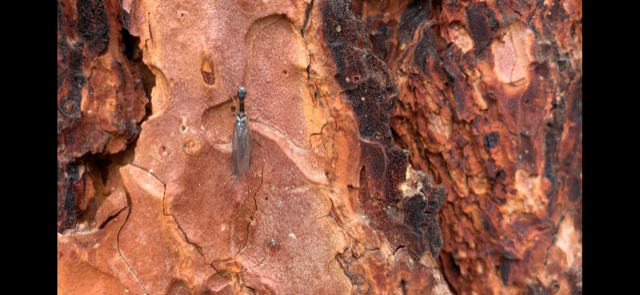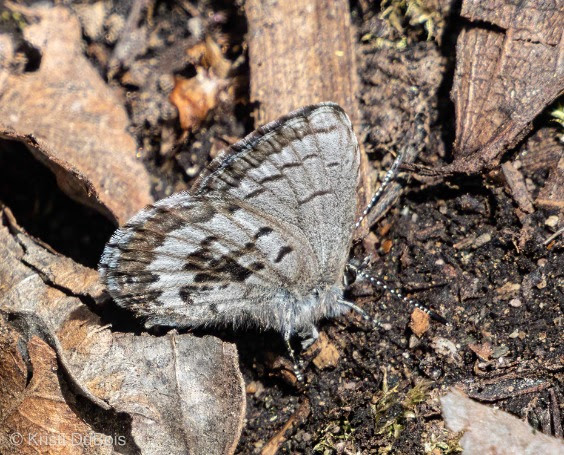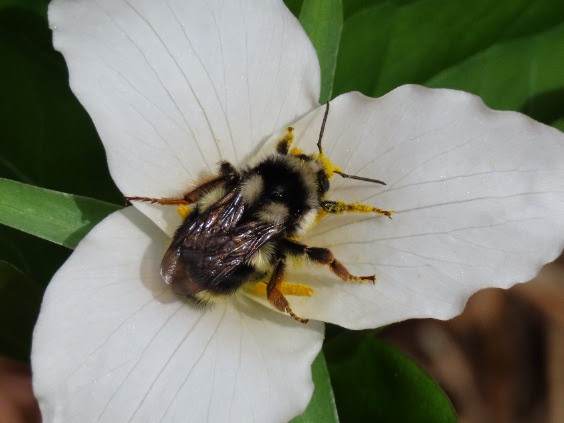Trevor spotted around 10-15 snakeflies on a ponderosa pine at Lee Metcalf National Wildlife Refuge—lucky! These beautiful and seemingly elusive insects get their name from the long “neck” of the adults (part […]
Read MoreArticles by: Butterfly House
Asher’s Blue (Celastrina asheri)
We’re excited to introduce you to a new butterfly species in western North America, the Asher’s Blue! Once considered a part of the many subspecies of azure butterflies (Celestrina), this […]
Read MoreNearctic Bumble Bee (Bombus vancouverensis nearcticus)
We featured this bumble bee about a month ago, but not on a Trillium ovatum backdrop. These three-petaled beauties require the services of pollinators, like bumble bees and beetles, to produce seeds. […]
Read MoreMiner Bee (genus Andrena)
Andrenas are commonly referred to as “mining bees,” because they construct underground nests. If you scour the ground along park trails, you may spy the holes of Andrena nests, usually no more […]
Read MoreGiant Silkmoth Cocoon (genus Hyalophora)
While this may look more like something your cat coughed up, it’s the cocoon of a Giant Silkmoth—likely the Ceanothus Silkmoth (Hyalophora euryalus) or “Kasloensis” (Hyalophora euryalus kasloensis). Last year, […]
Read MoreA Tumblebug (Canthon simplex)
Last week, we had a tumblebug sans dung ball, this week with! Ellen writes, “there were 2 rolling the dung along. The 2nd went into a dark hole in the ground when […]
Read MoreCobweb Spider (Steatoda borealis)
Cobwebs spiders (family Theridiidae) are often housemates, wanted or otherwise. Even if you don’t see them, you may find their handiwork—messy, three-dimensional webs, with strands running in many different directions. […]
Read MoreMay Beetle, also called June Bug (genus Phyllophaga)
These common beetles are named for the months they are most numerous in, May and June. The adults are nocturnal, foliage feeders, while the larvae, known as white grubs, feed […]
Read MoreMoth Pupa (order Lepidoptera)
If you spend any time digging in your garden, chances are you’ve come across one of these before. While it is extremely difficult to determine the exact species, this is […]
Read MoreWestern Black Widow (Latrodectus hesperus)
This immature female black widow is certainly beautiful …but take that red hourglass marking on her underside as a warning. While they are not aggressive (will not attack you), they will defend themselves or […]
Read More








